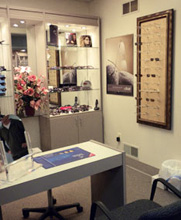Diabetes
Diabetes and its complications can greatly affect many parts of the eye. A common complication of diabetes is diabetic retinopathy in which elevated blood sugar damages the delicate blood vessels inside the eye causing them to leak, bleed and become blocked. If untreated, diabetic retinopathy can lead to permanent vision loss and blindness. It is the leading cause of blindness in adults aged 20 to 70 years old. Because this disease can cause blindness, early diagnosis and timely treatment is essential. That is one reason why it is important to have your eyes examined regularly by a doctor of Optometry, especially if you have diabetes or are at risk for development of diabetes. Besides retinopathy, other eye conditions associated with diabetes include fluctuations in vision, double vision, cataracts and certain type of glaucoma. During a comprehensive eye examination, your optometrist gets to know you, your medical history, your family history, your lifestyle and your vision needs.To detect diabetic retinopathy, your optometrist can look inside your eyes with lights and lenses that magnify the view of the retina. The interior of your eyes may also be photographed to provide documentation of the retinal appearance.
|
